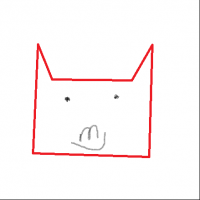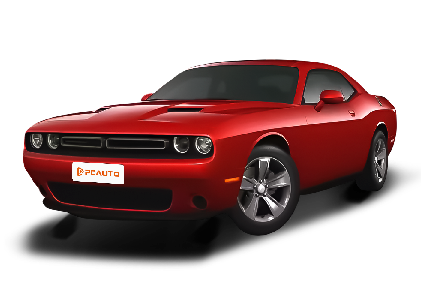Q
How many people can fit in a Challenger?
The Dodge Challenger, a classic American muscle car, comes with a standard 5-seat configuration, which can comfortably accommodate five adults. The front row is equipped with bucket seats that offer excellent support. Although the rear-seat headroom in the Challenger is affected by the fastback styling, the legroom is sufficient for daily use. It's worth noting that high-performance versions like the Challenger SRT Hellcat may come with a standard 4-seat layout due to their enhanced driving orientation. The middle rear seat is removed to install a driveshaft tunnel for a stronger structure.
For Malaysian consumers, the car's length of over 5 meters and wheelbase of 3 meters give it an edge over local models in the same class. However, the actual seating experience can be affected by the pedal position adjustment specific to the right-hand-drive version. Similar two-door muscle cars like the Ford Mustang also adopt a similar 4-5 seat layout. Although the rear seats in these cars are more suitable for short-distance rides, their unique design styles and driving pleasure still have a specific group of enthusiasts in the Malaysian automotive market.
Special Disclaimer: This content is published by users and does not represent the views or position of PCauto.
Related Q&A
Q
How much horsepower does a 2023 Challenger GT have?
The 2023 Dodge Challenger GT is powered by a 3.6-liter Pentastar V6 naturally aspirated engine, with a maximum horsepower of 303 hp and a peak torque of 358 Nm. It's paired with an 8-speed automatic transmission and comes with rear-wheel drive or an optional all-wheel drive system. This model is a relatively niche but performance - stable American muscle car in the Malaysian market, suitable for car owners who love a unique style.
It's worth mentioning that although the Challenger GT is positioned lower than the higher - performance R/T or Hellcat versions, its V6 engine offers a more balanced performance in terms of fuel economy and daily driving comfort, while still retaining the classic American muscle car exterior design.
For Malaysian consumers, the after - sales maintenance of this car may need to be carried out through import car franchises, and the parts supply cycle is relatively long. However, its overall reliability is quite good among similar models. If you have higher performance requirements, you can also consider other high - performance versions of the Dodge Challenger series, but the price and maintenance costs will increase significantly.
Q
How fast is the 2023 Dodge Challenger GT?
The 2023 Dodge Challenger GT is a rear-wheel-drive/all-wheel-drive muscle car that combines performance and practicality. Its 3.6-liter Pentastar V6 naturally aspirated engine can produce 303 horsepower and 268 lb-ft of torque. Paired with an 8-speed automatic transmission, it can accelerate from 0 to 100 km/h in about 6 seconds, and its top speed is electronically limited to around 250 km/h.
This car is quite rare in the Malaysian market. However, its all-weather all-wheel-drive system (optional) is especially suitable for the local rainy climate. It's easier to handle on wet roads than the standard rear-wheel-drive version. It's worth noting that although the Challenger GT isn't as powerful as high-performance versions like the Hellcat, the V6 engine offers better fuel economy for daily use. It consumes about 12 - 13 liters per 100 km in the city and can drop to 8 - 9 liters on the highway.
The characteristics of Dodge muscle cars, such as the retro exterior design, wide-body (in some versions), and customization options (like 20-inch wheels/performance exhaust) are all retained, and the maintenance cost is relatively lower compared to the V8 versions. If you're considering importing it, you also need to pay attention to Malaysia's AP import permit and the up-to-105% displacement tax (for engines above 3.0L), which may make the on-road price significantly higher than that in the US market.
In the same class, you can refer to the Ford Mustang EcoBoost (2.3T) or the Toyota Supra 2.0T. However, the Challenger GT's all-wheel-drive system and its American muscle car DNA remain unique selling points.
Q
How many cylinders does a 2023 Dodge Challenger GT have?
The 2023 Dodge Challenger GT is powered by a 3.6-liter Pentastar V6 naturally aspirated engine. It's a 6-cylinder engine with a V-shaped layout. The maximum power can reach 305 horsepower, and the peak torque is 365 N·m. It's paired with an 8-speed automatic transmission and offers rear-wheel drive or all-wheel drive options. This engine is well - known for its smoothness and reliability, making it suitable for daily driving and mild performance needs. Also, its fuel economy is more friendly compared to the V8 version.
For Malaysian consumers, the V6 engine of the Challenger GT strikes a good balance between power and fuel consumption. Coupled with its classic muscle car appearance, it's a choice that combines individuality and practicality. It's worth mentioning that the Dodge Challenger series also has higher - performance V8 versions like the R/T, Scat Pack, and Hellcat, which are equipped with 5.7 - liter, 6.4 - liter, and 6.2 - liter supercharged V8 engines respectively to meet the needs of different performance enthusiasts. However, the GT version is more suitable for the road conditions and fuel price environment in Malaysia.
Q
Is the 2023 Dodge Challenger GT V6 or V8?
The 2023 Dodge Challenger GT available in the Malaysian market comes with a V6 engine. It is equipped with a 3.6 - liter Pentastar V6 engine that delivers a maximum power of 305 horsepower. It's paired with an 8 - speed automatic transmission and offers either rear - wheel drive or an optional four - wheel drive system. This model focuses on balancing a sporty exterior with everyday practicality, meeting the Malaysian consumers' dual needs for performance and fuel economy.
It's worth noting that the V8 versions in the Challenger lineup (such as the 5.7 - liter Hemi V8 or the higher - performance 6.4 - liter Scat Pack) usually come in R/T or SRT models. As a version more suitable for daily driving, the GT is only equipped with a V6 engine. For Malaysian car enthusiasts, the V6 version has advantages in terms of maintenance costs and fuel adaptability. Its heat dissipation efficiency has also been specifically optimized for the local hot climate. Meanwhile, the car retains the classic muscle - car styling elements of the Challenger, like the dual - exhaust design and sport suspension tuning.
If you're after more power, you can look into the parallel - imported V8 versions. However, you need to consider the higher road tax and fuel adaptability issues. The Dodge brand caters to diverse needs through different power configurations, and the V6 GT version has significant cost - performance advantages in the Southeast Asian market.
Q
How big is the gas tank on a 2023 Challenger GT?
The fuel tank capacity of the 2023 Dodge Challenger GT is 72 liters. This design can meet the needs of daily driving and long - distance travel, taking into account both fuel economy and range. For users in Malaysia, this capacity can provide a cruising range of approximately 500 - 600 kilometers under common local driving conditions (such as city commuting or interstate highway driving). The specific value is affected by driving habits and road conditions. It's worth mentioning that the Challenger GT, as a rear - wheel drive/all - wheel drive switchable vehicle that combines performance and practicality, has a fuel tank volume that matches the energy consumption performance of its 3.6 - liter Pentastar V6 engine. This engine runs stably under the RON95 gasoline standard in Malaysia. If the owner plans a long - distance drive, it is recommended to regularly check the tire pressure and oil condition to optimize fuel efficiency. Also, in Malaysia's hot climate, the frequency of cooling system maintenance can be appropriately increased. Among muscle cars in the same class, the fuel tank of the Ford Mustang is about 61 liters, while that of the Chevrolet Camaro is 72 liters. It can be seen that the Challenger GT's range performance is at a mainstream level and is suitable for the diverse road conditions in Malaysia.
Q
Is the 2023 Dodge Challenger GT AWD?
The 2023 Dodge Challenger GT does offer an all - wheel - drive (AWD) version. This model is equipped with a 3.6 - liter Pentastar V6 engine, with a maximum power of 303 horsepower. It is paired with an 8 - speed automatic transmission. The AWD system can automatically distribute torque between the front and rear axles according to road conditions, enhancing handling stability on slippery or complex roads, which is especially suitable for Malaysia's rainy climate.
It's worth noting that the AWD system of the Challenger GT uses a rear - wheel - drive bias setting. During normal driving, 100% of the power is output to the rear wheels to maintain its sporty characteristics. Only when wheel slippage is detected will up to 50% of the power be sent to the front axle, balancing fuel economy and driving pleasure.
As an American muscle car, while the Challenger GT retains classic design elements, the AWD version has increased its daily practicality through suspension tuning. Its 20 - inch wheels paired with all - season tires also meet the road condition requirements in Southeast Asia.
Although Japanese cars dominate the Malaysian market, American performance cars of this kind still attract consumers who pursue individuality with their unique style and adaptable driving technologies. However, one should be aware of the relatively high maintenance costs due to their imported - car status.
Q
What is the top speed of the 2023 Challenger GT?
The top speed of the 2023 Dodge Challenger GT is approximately 250 kilometers per hour. This model is equipped with a 3.6-liter V6 naturally aspirated engine, boasting a maximum output power of 305 horsepower. Paired with an 8-speed automatic transmission, it offers a smooth and powerful performance, which meets the driving requirements on Malaysian highways. As a classic American muscle car, the Challenger GT not only has excellent performance but also takes daily practicality into account. Its all-wheel-drive system provides better handling stability in Malaysia's rainy climate. It's worth mentioning that although the acceleration performance of the Challenger GT is slightly inferior to that of the V8-powered Scat Pack or Hellcat, its fuel economy and practicality are more suitable for daily driving. Moreover, it retains the iconic retro exterior design of Dodge muscle cars, such as the square body lines and round headlights, which look extremely unique on Malaysian streets. For Malaysian consumers who love American muscle cars but don't need extreme performance, the Challenger GT is a great choice that balances performance and practicality.
Q
How much is a 2023 Challenger GT trade-in value?
The used car trade-in value of the 2023 Challenger GT will be affected by the vehicle's condition, mileage, configuration, and the local market demand in Malaysia. Generally, the estimated used car value of this model is around RM150,000 to RM200,000. It is recommended to get a specific price assessment through local authorized dealers or professional used car platforms.
As an American muscle car that combines performance and comfort, the Challenger GT is equipped with a 3.6-liter V6 engine and an all - wheel drive system. It's a relatively niche model in the Malaysian market but has a stable group of enthusiasts. Therefore, well - maintained vehicles will have a higher resale value.
In addition, the used car market in Malaysia pays special attention to the maintenance records and the integrity of original parts for imported cars. It is recommended that car owners keep complete maintenance records to increase the trade - in value. If you're considering a trade - in, you can also learn about the market conditions of similar models such as the Ford Mustang or Chevrolet Camaro in advance to gain more initiative in the negotiation. At the same time, be sure to choose a reputable used car dealer or an official channel to ensure a safe transaction.
Q
What engine is in a 2023 Challenger GT?
The 2023 Dodge Challenger GT is equipped with a 3.6-liter Pentastar V6 naturally aspirated engine. It can reach a maximum power of 305 horsepower and a peak torque of 364 N·m. It's paired with an 8-speed automatic transmission, and comes standard with rear-wheel drive or an optional all-wheel drive system. This engine is well - known for its smoothness and reliability, making it suitable for daily driving and occasional performance needs.
For Malaysian consumers, the V6 engine of the Challenger GT strikes a good balance between fuel economy and power performance. Moreover, it can adapt to the local climate and road conditions. The all - wheel drive version also provides better stability on slippery roads during the rainy season.
It's worth mentioning that the Pentastar series of engines are widely used in many models of the Chrysler Group. They have mature technology and are easy to repair. Malaysian authorized service centers can also offer comprehensive maintenance support.
If you're after more power, you can consider the 5.7 - liter Hemi V8 version of the Challenger R/T. However, the V6 engine of the GT version can already meet most driving scenarios and is more in line with the considerations of the displacement tax system in the Malaysian market.
Q
Is a Dodge Charger good for traveling?
The Dodge Charger, a classic American muscle car, needs to be evaluated in the context of Malaysia's driving environment when it comes to its performance on long-distance trips. Its spacious cabin and relatively large trunk space (about 370 liters) are suitable for family outings. The abundant power provided by the V6 or V8 engines can handle high-speed cruising. However, it should be noted that the fuel economy of the 3.6-liter Pentastar V6 engine (about 11-12L/100km in the city) under Malaysia's fuel prices may be higher than that of Japanese models in the same class.
The chassis tuning is more sport-oriented, which may affect comfort on some road surfaces in Malaysia. And the rear-wheel-drive (RWD) layout requires cautious driving during the rainy season. It's worth mentioning that in Malaysia's hot climate, the cooling efficiency of its standard-equipped air-conditioning system and optional features such as seat ventilation deserve attention. At the same time, be aware that the peculiarity of the right-hand-drive version may affect maintenance convenience. If you often travel between Singapore, Malaysia, and Thailand, you also need to consider the differences in the supply of parts for American-spec cars among ASEAN countries.
Overall, the Charger is suitable for long-distance travelers who pursue driving pleasure, but you need to weigh the usage cost and local adaptability.
Latest Q&A
Q
Toyota Hiace how many seats
The Toyota Hiace is a staple in Malaysia's commercial and family vehicle scene, with seating options that vary by trim. The standard models, like the Hiace Van, typically offer 12 to 15 seats—perfect for commercial shuttle services or group outings. On the flip side, the more upscale variants such as the Hiace Super Grandia trim down to 9 to 11 seats, prioritizing comfort with premium upholstery and rear air-conditioning, ideal for family trips or business reception. It is worth noting that some aftermarket shops also offer custom seating configurations, such as adjusting to 13 seats or reducing to 8 seats to flexibly adapt to different uses. For Malaysian buyers, the Hiace's biggest draws are its legendary durability, high ground clearance that handles local road conditions like a champ, and wallet-friendly maintenance costs. The diesel engine variants, in particular, stand out for their impressive fuel efficiency. For the most accurate specs, though, your best bet is to hit up a Toyota Malaysia authorized dealer. They can walk you through the latest model year details, including safety features like ABS and dual airbags—stuff that could definitely sway your final purchase call.
Q
How many models does Toyota Hiace have
The Toyota Hiace is a total workhorse and family favorite here in Malaysia, killing it in both commercial and personal use. You’ll mainly find a few go-to variants cruising our roads: the standard Hiace Van, the Hiace Commuter (that’s the people-hauler), and the top-dog Hiace Super Grandia (the luxury liner). These aren’t just badge swaps—they’re built for different jobs. The Hiace Van? It’s all about getting cargo from A to B, no frills, just space. But the Commuter and Super Grandia? They’re where comfort takes the wheel, packing nicer seats, better air-con, and all that extra kit to keep passengers happy.
Under the hood, Toyota’s got you covered with diesel and petrol engine options, so whether you’re after torque for heavy loads or something smoother for daily drives, there’s a Hiace for that. Malaysians swear by this van for a reason—its legendary durability and rock-solid resale value are huge wins. Plus, that cavernous interior and flexible seating? Perfect for everything from running a business to shuttling the whole family (and then some).
If you’re thinking of adding a Hiace to your fleet or driveway, do yourself a favor: figure out what you’ll *really* use it for, then hit up your nearest authorized dealer for a test drive. Trust me, you’ve gotta feel that space and drive to get the full picture.
Q
Mitsubishi Xpander made in which country
The Mitsubishi Xpander is a multi-purpose vehicle (MPV) primarily built in Indonesia, rolling off the lines at Mitsubishi Motors' local plant there. Since its launch back in 2017, this people-mover has struck a chord in Southeast Asian markets – Malaysia included – thanks to its roomy interior and all-around practicality.
The Xpander's design does a neat job balancing the agility needed for city hops with the space requirements of family getaways. Under the hood, you'll find a 1.5-liter MIVEC engine, which delivers smooth power and decent fuel efficiency – perfect for Malaysia's varied road conditions, whether you're navigating city streets or hitting the highway.
What really makes it stand out for Malaysian families, though, are those thoughtful touches: the generous ground clearance that handles those unexpected potholes, and the super flexible seating arrangements that let you juggle passengers and cargo with ease. Being purpose-built for Southeast Asia, the Xpander nails the local adaptations. Think a robust air conditioning system that laughs at our tropical heat, and interior materials that can take the daily grind – little wonder it's a top pick among Malaysian buyers.
If the Xpander has piqued your interest, swing by your nearest Mitsubishi dealership for a test drive. There's no better way to get a feel for how it drives and just how practical it really is.
Q
how many seater is Mitsubishi Xpander
The Mitsubishi Xpander has carved out a solid following in Malaysia's MPV scene, and it's easy to see why. This 7-seater is a hit with families, thanks to its roomy interior and smartly designed, flexible seating. The 2+3+2 layout works well – the second row slides back and forth to free up legroom, while the third row is perfect for kids or adults on shorter trips. Need more cargo space? Just fold those rear seats down, and you've got plenty of room for whatever you're hauling.
Under the hood, there's a 1.5-liter MIVEC naturally aspirated engine, paired with either a 4-speed auto or 5-speed manual gearbox. It's not about speed here; it's about that smooth, easy drive for daily use and keeping fuel costs in check – exactly what family buyers want.
Practical touches don't stop there. You get handy features like a multifunction steering wheel, a touchscreen infotainment system, and a reverse camera, all of which make life behind the wheel that bit easier.
What really makes the Xpander stand out in Malaysia, though, is its whole package. It's priced reasonably, Mitsubishi's known for building reliable cars, and their after-sales network here is pretty extensive. If you're a consumer who prioritizes space and getting good value for your money, this is a solid pick in the practical family MPV segment.
Q
how much is the Mitsubishi Xpander
The Mitsubishi Xpander's pricing in Malaysia varies depending on the trim level and specifications. The entry-level Xpander Standard starts at approximately RM92,890, while the higher-spec Xpander Premium comes in at around RM99,890. Actual prices may fluctuate based on dealer promotions or optional extras selected. This 7-seater MPV has struck a chord with local families thanks to its spacious interior, practicality, and strong value for money. Under the hood, you'll find a 1.5L MIVEC naturally aspirated engine churning out 105PS and 141Nm, paired with a 4-speed automatic transmission. Fuel efficiency is rated at around 6.6L/100km. Convenience features include LED daytime running lights and power-folding side mirrors.
Notably, the Xpander boasts a generous 205mm of ground clearance, making it better suited than your average MPV for those rougher patches of road you might encounter around Malaysia. Its "Dynamic Shield" family face also gives it a distinct and recognizable look on the road. When considering rivals in the same segment, the Toyota Avanza or Honda BR-V might come to mind, but the Xpander holds an edge in terms of third-row space and cargo-carrying versatility. It's always a good idea to head down to an authorized showroom for a test drive to get a real feel for how it handles, and to check out the latest promotions – things like low-interest financing or complimentary service packages could sweeten the deal.
View More


















Pros
Cons